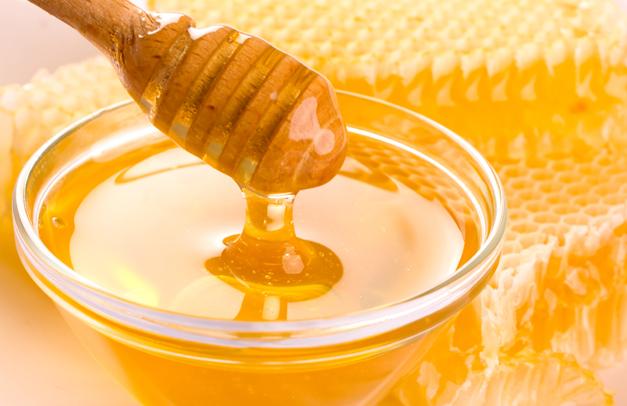
Where honey comes from
Bees sip a little nectar when they make their flowery rounds, but they carry most of it back to the hive and stash it in the hexagonal wax cells of the honeycomb to nourish young bees. The liquid nectar turns into honey when moisture evaporates. The finished product is mainly sugars – fructose and dextrose – plus a little bit of pollen, wax, proteins, vitamins and minerals. The clover honey that occupies most of the shelves in supermarkets is the blandest variety. More flavoursome honeys come from lavender, citrus blossoms and raspberry flowers.
Back in the 1970s surgeons reported that women who had gynaecological surgery had shorter hospital stays and showed no signs of infection when incisions were coated with honey. Studies in India show that burns dressed with honey heal more quickly and with less pain and scarring than burns coated with silver sulphadiazine, a conventional burn treatment.
Honey has even been used to treat superficial eye problems, including conjunctivitis and chemical burns. In a study of more than 100 patients with eye disorders that didn’t respond to conventional treatments, doctors tested a honey ointment. Eighty-five per cent of cases responded and improvement. Applying honey to the eyes (don’t do it without asking your doctor first) may cause a brief stinging sensation and some redness, but is unlikely to cause other side effects.
Sweet digestion
Traditional healers used honey to treat a variety of gastro-intestinal complaints. Now there’s good evidence that it works.
For example:
- It soothes stomach ulcers Honey may reduce ulcer symptoms and speed up the healing time. Honey appears to reduce inflammation, stimulate bloodflow and enhance the growth of epithelial cells, the ones exposed along the interior of the stomach or intestine. Studies have also shown that honey kills H. pylori, the bacterium responsible for most ulcers. Raw honey (from farm shops or farmers’ markets) is probably the best choice as high-heat processing used to create pasteurized honey may neutralize some of the active compounds. A form of honey called Active Manuka Honey, produced in New Zealand from the manuka tree and available in health-food stores, appears to be more effective than other types.
- It promotes regularity Honey’s high concentration of fructose makes it just the thing for occasional constipation. Undigested fructose provides nourishment for normal intestinal bacteria. The resulting fermentation brings water into the large intestine and has a laxative effect.
A word of warning
Never give honey to children under the age of 1, as it may contain a small number of spores called Clostridium botulinum, the organism that causes botulism. The spores don’t thrive in the intestines of adults and older children. But they are able to multiply in babies, possibly causing a serious form of food poisoning known as infant botulism.